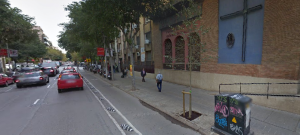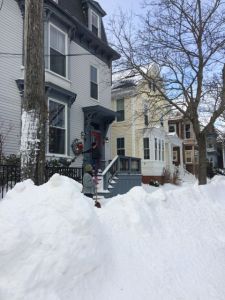Dear Melissa,
Is it really the last day of February? The last day before my least favorite month of the year? March always gives me the blues. The snow browns and sometimes turns to slush. The trees aren’t budding yet. My students and I are reading for a conscious uncoupling but have no hope of separating before April break. This year it’s a little different. Work is going well and teaching both To Kill a Mockingbird and Purple Hibiscus seems apt and timely. I’m bringing back Tea Time Tuesday. I have a group of 13 advisees grades 9-12 who I see every day save Wednesday for 25 minutes. I bought 14 crazy mugs at Goodwill and a huge box of assorted teas for Tuesdays. We need to wash the mugs with serious soap next week.
I’m writing to you from my home state of New Hampshire (live free or die) where I’ve met some pals for a ski weekend. I’m up before everyone else, as always, and I’m waiting for a reasonable time to creep downstairs and suss out the caffeine situation. There’s something I love about waking up early on Saturdays. This morning, my nose wanted to stay under the covers. It was -8 here last night.
Did you get into this whole blue/black and white/gold debate? I have to say given our last two letters it is a day I could do with history erasing. Aside from it being a great TOK lesson, I wonder why it is we can collectively get so passionate and riled up about something so small when compared to, say, domestic and foreign affairs. Or the fact that talking about the treatment of people in this country based on the color of their skin remains difficult. Did it make waves over to Barcelona?
I am feeling better. A few days before my migraine, I met my friend Sophie for a drink at Hunt & Alpine. They have a lovely bar, huge windows and serve pickled things, of which you know I am fond. Their happy hour menu made me snort:

I am not sure you are familiar with Allen’s Coffee Brandy being such s classy lass who didn’t spend any formative years in Maine, but let’s just say the usual cocktails involve milk and Allen’s and names fit for a song by Robin Thicke. (I’m not sure that’s how you spell his name and don’t feel it’s worth my time to fact check.) After some gentle assurance by our bar tender, I had the Mexico, Maine and Sophie had the Revolver. We were not disappointed.
I must confess I only knew the name of the boxes sculpture because of my friend Laurent who looked it up in his French guidebook. Like you, my mind was sent akimbo several years ago when I bought a postcard of our neighborhood Miró and found out it was not a bull but a woman and a bird. I guess, like the dress, it’s all about perception.
Now that I know you are an outdoor cat, I wish you were here right now. I’d boil a pot of water and make a pot of the orange pekoe I brought back from the Azores. I’d put a splash of milk in the bottom of our cups before pouring and then grab your glasses, putter upstairs and say, “Meli! Time to get up!”
Love and Rabbit Rabbit (almost),
T.



